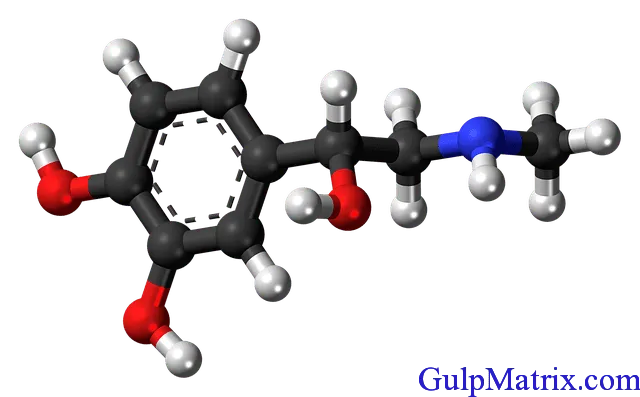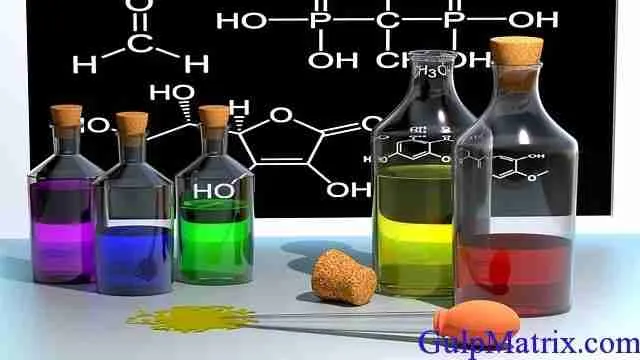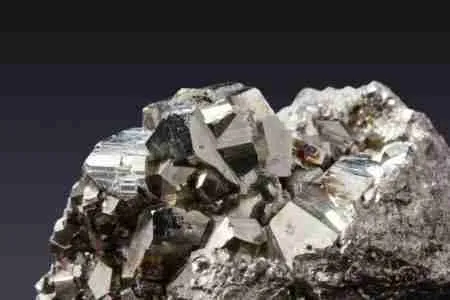The Arrhenius Ionic Theory Explains Electrolysis

The ionic theory was first propounded by Arrhenius in 1887 to give some insights and explanations about electrolysiselectrolysis. The Arrhenius ionic theory posits that when an electrolyte is melted or dissolved in water, some or all of the molecules of the substance dissociate into freely-moving charged particles called ions in a process known as ionization. The metallic ions such as ammonium ions and hydrogen ions are positively charged while non-metallic ions and hydroxide ions are negatively charged. The number of electrical charges carried by an ion is equal to the valency of the corresponding group or atom. As a result of the electronic charges carried by these ions, they exhibit differences in properties from those of their corresponding atoms or groups which are electrically neutral.

When an electric current is passed through an electrolyte, the free ions lose their random movement such that positive ions become attracted to the cathode(negative electrode) and are known as cations while the negatively charged ions move to the anode(positive electrode) and are known as anions. This means that the current passing through the electrolyte is carried by the movement of the ions towards the electrode, and not by the flow of electrons in the electrolyte.
The version of Arrhenius ionic theory has since been modified following revelations from studies obtained from X-ray diffraction which shows that salts and strong alkalis consist of oppositely charged ions that are present even in solid state. In the modern theory, it posits that the ions in such solids are pulled away from one another either by the heat energy applied when the solid melts or with the help of the solvent molecules when the solid dissolves.
Svante Arrhenius developed the Ionic theory which explains why certain substances conduct electric current. These substances are known as electrolytes and they can be either solids or liquids.
In his theory, he proposed specific definitions of acids and bases. According to Arrhenius, acid is any substance that produces hydrogen ions in solution and base is any substance that produces OH-ions in solution.
What is Arrhenius Ionic Theory?
The Arrhenius acid-base theory is one of three theories used to describe the behavior of acids and bases in chemical reactions. It was developed by Swedish chemist Svante Arrhenius and describes the temperature dependence of the activation energy of chemical reactions. It is important to remember that this theory is limited to aqueous solutions and does not apply to gaseous acids or bases. A substance can be classified as an Arrhenius acid or a base if it produces H+ ions or hydroxide ions when it dissociates in water.
An acid is a compound that increases the concentration of H+ ions in an aqueous solution. The released H+ ions are not free-floating, but they form a bonded complex with the water molecules to create hydronium ions (H3O+). Examples of Arrhenius acids include HCl, H2SO4, and HNO3.
A base is a compound that forms OH- ions in an aqueous solution. It can be a salt or an organic molecule. Typically, a base forms a salt with an acid and is neutralized by the acid’s water molecules. Examples of Arrhenius bases include sodium hydroxide, NaOH, and calcium hydroxide, Ca(OH)2.
The Arrhenius Equation
The Arrhenius equation is an easy way to calculate the activation energy of a chemical reaction. This is because it uses the principle that the temperature at which a chemical reacts depends on the temperature at which the reaction must occur in order for it to proceed to equilibrium. The lower the activation energy of a chemical, the faster the reaction will take place. A high activation energy means that the reaction must happen at a higher temperature to reach equilibrium. A low activation energy, on the other hand, will mean that the reaction must happen at a lower temperature to reach equilibrium. The Arrhenius equation is useful in finding out how long a chemical will take to reach equilibrium. This will help determine the time and cost of production of a product. It is also used in calculating the boiling and melting points of metals. In addition, it can be used to predict the vapor pressure of liquids.
Application of Arrhenius Ionic Theory in Electrolysis
In electrolysis, an electric current passes through a solution containing charged ions. This causes the ions to move and produce heat. The rate at which the ions move is proportional to the strength of the current. Arrhenius ionic theory is the underlying principle of this process. The theory states that when an electrolyte dissolves in water, it dissociates into positively and negatively charged ions. The ions move freely in the solution and show electrical conductivity, which is dependent on the number of ions present. The more ions there are, the higher the conductivity. Arrhenius also noted that the rate at which the ions move is proportional the concentration of the electrolyte.
Arrhenius ionic theory defines acids and bases in terms of their acid-base behavior in aqueous solutions. It states that an acid is a substance that gives off hydrogen ions (H+) in aqueous solution, while a base produces hydroxide ions (OH-). A compound that does not fit this definition cannot be considered as an acid or a base. For instance, aqueous sodium bisulfate and aqueous Na2CO3 are both acids, but neither of them contains the H+ ion.
A major limitation of Arrhenius theory is that it only describes the behavior of acids and bases in aqueous solutions. However, many acid-base reactions occur in gaseous forms. This makes it impossible to explain these reactions using Arrhenius theory alone. A better theory to describe these types of reactions is the Bronsted-Lowry theory, which explains the acid-base behavior of ionic species in both aqueous and gaseous forms.
The Bronsted-Lowry theory adds to the Arrhenius ionic theory by explaining how strong or weak acids and bases are. It states that strong acids and bases are those that yield a large amount of H+ and OH- ions. Weak acids and bases, on the other hand, do not yield a large amount of these ions. The Bronsted-Lowry theory is also more flexible than the Arrhenius ionic theory, because it allows for compounds that do not contain a molecule of water to be labeled as an acid or a base.
Other Applications of Arrhenius Ionic Theory
The Arrhenius theory is used to explain many chemical reactions, including electrolysis. It defines acids and bases in terms of their ability to yield ions when dissolved in water. This allows chemists to easily identify and describe the characteristics of chemical solutions. In his 1883 doctoral dissertation, Swedish scientist Svante Arrhenius proposed that molecules of acids, bases, and salts dissociate into ions when they are dissolved in water—a concept that revolutionized chemistry. He would receive the Nobel Prize in Chemistry in 1903.
According to Arrhenius, an acid is a substance that contains hydrogen and yields hydrogen ions in aqueous solution. Examples of such acids include hydrochloric acid (HCl), sulfuric acid, and acetic acid. A base is a substance that contains the OH group and yields hydroxide ions in aqueous solution. Some examples of bases are sodium hydroxide (NaOH), potassium hydroxide, calcium hydroxide, and NH4OH.
Arrhenius’s definition of acids and bases is limited because it can only describe acid-base reactions in aqueous solution. However, these reactions can also occur between molecules in the gas phase. Therefore, Arrhenius’s theory cannot explain the behavior of gases such as CO2 and SO2. Fortunately, other scientists have developed more comprehensive theories that can be applied to a wider range of chemical reactions.
In addition, Arrhenius’s definition of acids is too narrow because it only applies to substances that yield H+ ions on dissociation. There are a number of acids that do not contain H+, such as aqueous sodium bisulfate and aqueous sodium carbonate. Therefore, Arrhenius’s definition is not applicable to all acids and bases.
Another limitation of the Arrhenius theory is that it only explains acid-base reactions in aqueous solutions. Moreover, it only describes reactions that involve the formation of water and a salt. It does not account for reactions that involve a non-aqueous solvent or that occur between two molecules in the gaseous phase. This limitation is why many chemists prefer to use the Bronsted-Lowry theory, which is more general and can be applied to a wide variety of chemical reactions. The theory is also not able to explain why a compound can act as an acid in one reaction and as a base in another reaction.
Principles behind electrolysis
The basic principle behind electrolysis is that when a chemical is dissolved in water, it dissociates into electrically charged particles called ions. The ions carry opposite charges and are attracted to each other. When an electric current passes through the solution, it moves the ions towards the electrodes. The ions can then interact with each other or with other substances in the solution. The ions that move to the cathode are called cations, while those that move to the anode are called anions. When a reaction takes place, it can produce hydrogen gas (H2) or oxygen gas (O2). The hydrogen and oxygen gases are then separated by passing them through a separator.
Svante Arrhenius was a Swedish scientist who developed the ionic theory of acids and bases. His theory states that acids are substances that dissociate in water to yield electrically charged atoms or molecules, called ions. Arrhenius proposed that acids are substances that produce hydrogen ions in solution, and bases are substances that produce hydroxide ions in solution. He also proposed that most chemical reactions require energy to overcome the activation barrier before they can occur.
Arrhenius further developed this theory by studying the properties of solutions and electrolytes. He found that the conductivity of electrolytes depends on their concentration and the presence of other ions in solution. He also found that the amount of ionization in a solution is inversely proportional to the concentration of the solution.
Electrolysis is an important method for producing hydrogen and oxygen gases. It is also used to decompose metals such as iron and steel to form metal oxides. Electrolysis is also used to produce nitrates, such as sodium nitrate and potassium nitrate. The nitrates can then be used to fertilize plants.
Electrolysis involves placing two partially immersed rods, one connected to the negative terminal of a battery and the other to its positive terminal. This setup is known as a galvanic cell. The rods are often referred to as the cathode and the anode. Each rod is then fitted with an electron-giving or electron-extracting surface. The electrodes are then attached to a power source that can supply an adequate amount of current for the electrolytic reaction to take place.


